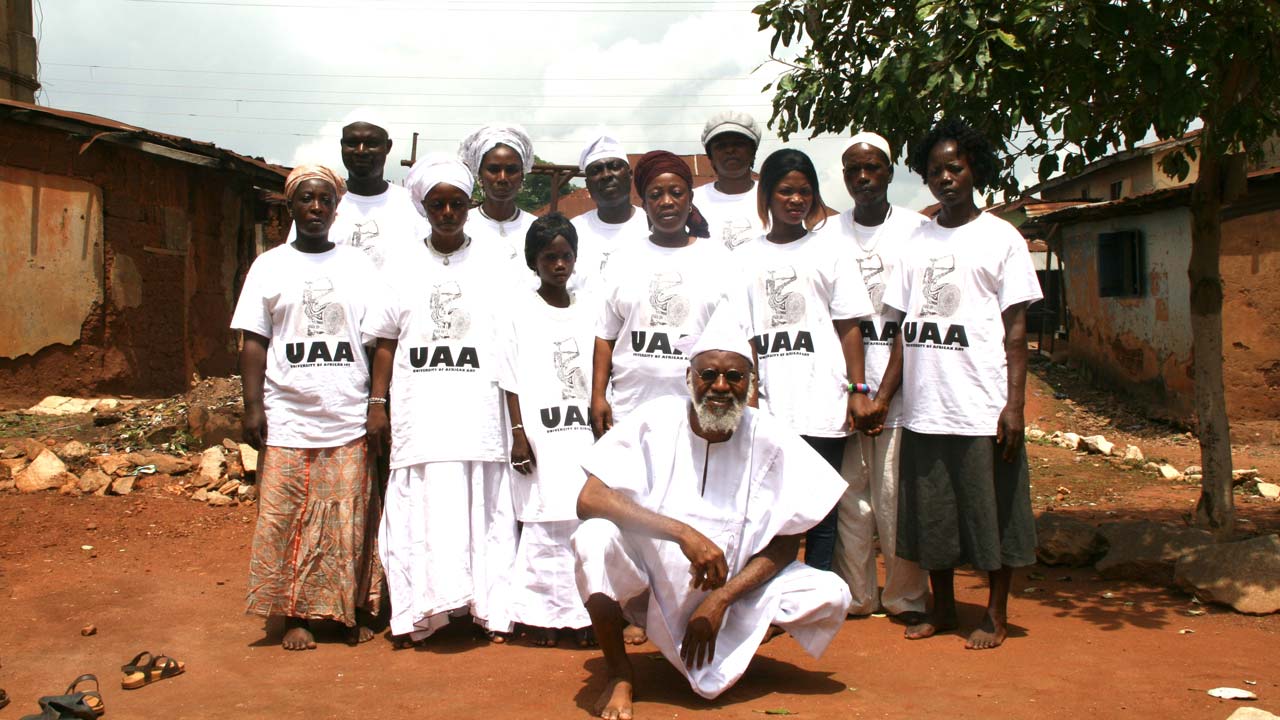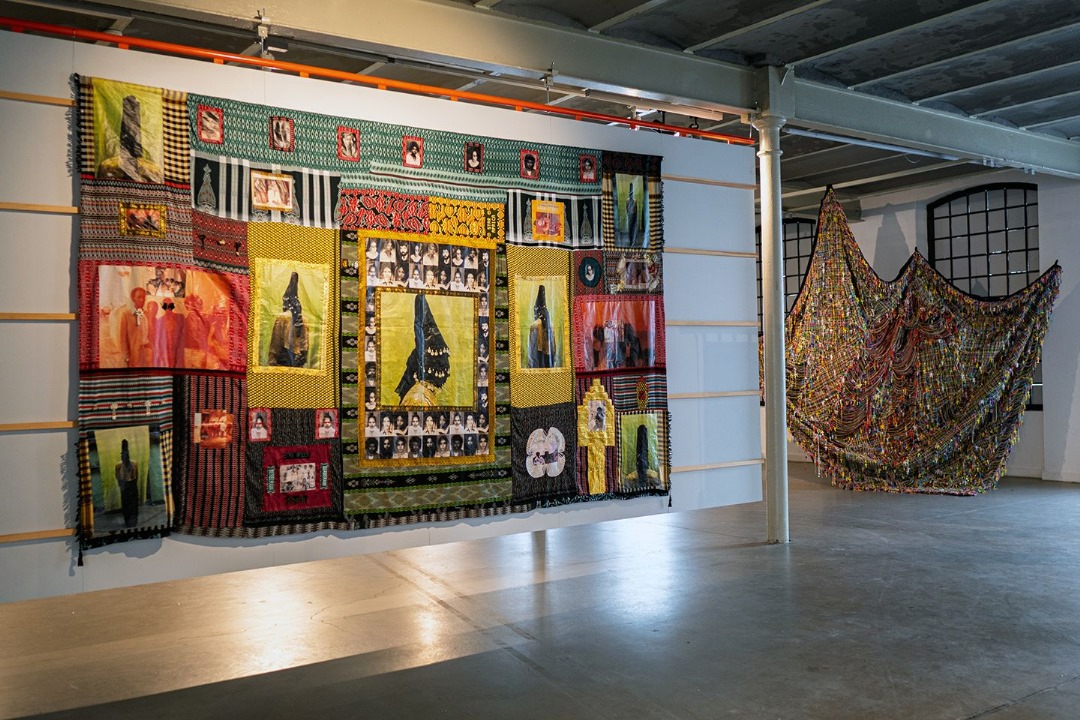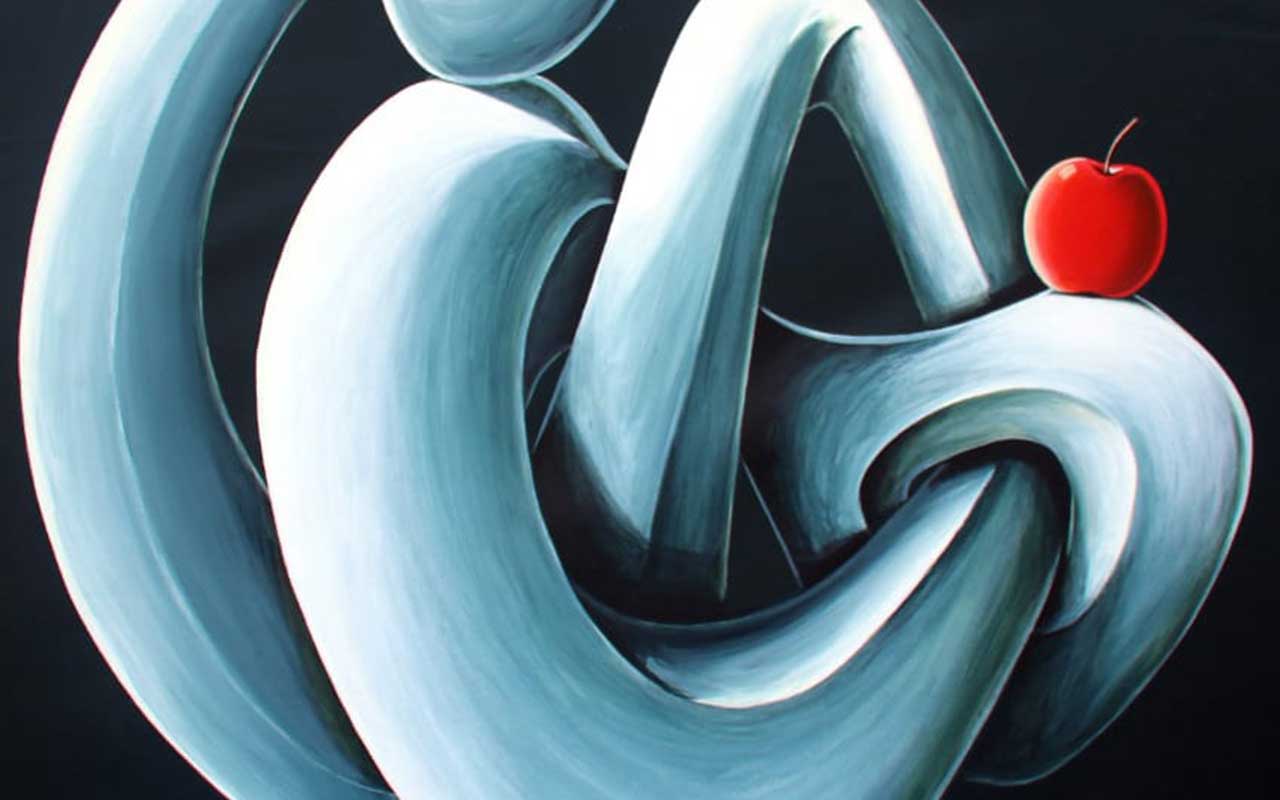
Across all facets of endeavours come the imperative to induce advancement through creativity, especially those on indigenous knowledge systems. The synergy between art and development seems set to be projected by a Diaspora artist, Prof. Moyo Okediji. The take-off point for his dream of Africa-based development is through art from the cradle of Yoruba civilization, Ile-Ife, Osun State. His platform is the University of African Art (UAA) and its goal, Okediji says, is to use the ancient city of Ile-Ife as a GownTown (meeting point and synergy between the academic and the town) to catalyse development based on traditional Yoruba governance structure. The project, he argues, would become a central pool of knowledge for alternative education system. Okediji argues that western university systems in Africa have not met the desired goal of practical development of the people. But the University of African Art (UAA), he says, is focused on changing the city of Ile-Ife, as the brand for a starting point in indigenous knowledge systems that are relevant to advancing the people and their environment.
The concept revolves around an entire city as ‘a mega-university’ that has no boundaries between the academia and the streets. “The town is the gown, and the people and space merge into a mammoth library to be researched, read, analysed and disseminated.”
It’s also spiritual as academics, artists, researchers, as well devotees of Yoruba traditional religion from all over the world have a common convergence to advance the scientific and artistic values of their faith using the GownTown of Ile-Ife. And such participants, Okediji explains, will be required to apply to study, register and get certified after successful completion of studies. UAA has as its Eternal Patron, His Royal Highness, Òjájá II, Ooni of Ife, Oba Adeyeye Ogunwusi.
Okediji is a professor of Art and Art History at University of Texas, Austin, U.S. He is the founder of UAA, an evolving project-in-progress that is currently and physically taking off with the theme GownTown. Okediji is actually on a familiar terrain as regards creating new vista for creativity to blossom. Over two decades ago, he was one of the foundation members of Onaism movement before he went to the U.S. Other foundation embers of the movement included Kunle Filani, Tola Wewe, Bolaji Campbell and Tunde Nasiru.
Perhaps, a reappraisal of Onaism, in contemporary Nigerian or African art offers an opportunity to scale Okediji’s return with his UAA concept. “Onaism took Nigerian art by storm in the late 1990s and 2000s, through the influence of Tola Wewe’s work,” Okediji recalls via e-mail conversation, shortly after he started engaging with UAA participants at Ife a few weeks ago. “But before I departed for the U.S., we worked out Onaism into a simple system that is rhythmically ornate. Wewe’s style, which conveys that rhythm, became the favourite thing to copy or emulate by many young artists, especially those living in Lagos.”
Onaism would later transcend its birthplace. One of the exponents of the native Yoruba art-identity in the diaspora was Moyo Ogundipe (1948 – 2017). The late artist, according to Okediji, “adopted Onaism and actually pushed the genre to an exceptional distance.” He, however, concedes that though one of the frontrunners of the art form, Wole Lagunju is still working with Ona, “but at Obafemi Awolowo University (OAU), where we originated Onaism, it has died, largely resulting from religious matters.”
Beyond the concept of creating art, Onaism, he states, was a concept “as a means of transforming the lives of people through aesthetic applications.” In 2011, just when one thought that the wind of contemporary Nigerian art was blowing Onaism into irrelevance, the art form was reawakened, not on the canvas or the academia where it originated, but for controversial reason and on the wrong side of newspaper pages. The emotive exchanges that errupted on the pages of newspapers among some of the foundation members was, indeed, worrisome.
Six years after, the 2011 controversy that trailed the origin of Onaism would continue to traumatise Okediji, such that he says the new concept should be protected from falling into the experiences of the past.
“I returned to Ile-Ife, partly to launch the University of African Art because Onaism failed. First, you will recall the controversy surrounding its origin. That we resorted to such an ugly public mutual butchery was disgraceful, and I partly contributed to that rot, something I’m not proud of. I am sad that I allowed anger to overcome me at that time, and to say certain things that I now wish I could delete. But words, once they break like an egg, cannot be returned to the vocal chord.”
Perhaps, the basic difference, which insulates UAA from the banana peels of the past, is the new project’s design that is aimed at making a difference on the lives of Africans.“I have conceptualised UAA as a GownTown project, in which the entire city of Ile-Ife is the university. I have had the idea for some 10 years, but was unable to actualise it because the sociological conditions were not there. But with the new Ooni of Ile Ife, Oba Ogunwusi Ojaja II, the time is now. He is the patron of the university.”
There is no doubt that the Ooni of Ife has been showing signs of being a change-agent since his installation over a year ago. But in specific terms, what is the nexus between a university and an African monarchy? To which Okedeji responds, “With the influence of the Ooni, UAA is able to work with the various kings in Ile-Ife to make this arrangement possible.”
Okediji explains his argument about the indigenous governance structure having a much stronger hold on people than the western system. “If the king’s Ilari (town crier) says that people must not dump refuse in a particular place on the warning of invoking the wrath of deities like Ogun, Sango or Sonponna, people would immediately stop the unhealthy habit. But the same people would ignore any directive from Abuja because they regard the central seat of power as corrupt, toothless and impotent.”
Texas, Okediji’s base in the U.S., is home to quite a large community of Africans. Outside the academia, it would be of interest to know what kind of influence African art and culture has over there.“Hardly any,” he admits.
As an author, the first part of the title of his 2003 book, The Shattered Gourd: Yoruba Forms in 20th Century American Art, would seem prophetic of Nigerian academic journey, where the ‘gourd’ of knowledge seems to have shattered through neglect and many prevailing anti-academic practices. Perhaps, in his passion to return Nigeria’s university system to a sustainable environment the way he left them years ago, Okediji’s UAA could serve as a forerunner.
“I wish I had the opportunity to return to a Nigerian university to teach. But I doubt if any Nigerian university is willing to employ me. I may just be regarded as a threat to the system.”
The last 10 years have exposed unprecedented rise in monetary value of Nigerian art, which has been described as a kind of renaissance. But as an observer from the diaspora, Okediji picks holes in the capitalist pattern of the unfolding art appreciation culture in Nigeria. Lagos, being a “global art market,” he agrees, is a good development. But there are certain grey areas, he concedes.
“It also saddens me that the art produced in Nigeria is largely elitist,” he says. “It has no impact on the lives of ordinary Nigerians,” and admonishes artists who “regard their works as means of amassing wealth. They do not fully understand that the western art system that they operate is one that makes only a few stars while impoverishing most of the other artists.”
In fact, Okediji is not even interested in the commercial art value, particularly the secondary art market, as he notes, “I have no interest in commercial art at the moment. I am interested in non-commodity art, an art that transforms the lives of the people. You can’t auction people anymore in Africa. That is history. Now we need to use art to increase the value placed on the lives of Africans. This is the sort of art that I spend my time promoting. There are obviously by-products of painting, sculptures and installations from the GownTown initiatives that the auction houses might explore, but it is not my focus at the moment.”
Now that he is home, his idea of making art appreciation value make impact on the streets is being put into practice. He discloses that some Nigerian artists are working with him on the GownTown project at UAA, saying, “Soji Ogunjobi is serving as the provost, while Adenike Amusat is the director of communications. I’m hopeful others will join me to transform and curate human lives, and not just limit themselves to paint, wood and bronze as art materials.”
Mentorship is an area most young artists in the country would like to benefit, especially from a major artist like Okedeji, who has the benefit of local and international art exposure. But physical distance between the mentor, like him, and the mentees could be a barrier. But Okedeji argues, “Distance is vastly diminished with the use of technology. I have been operating UAA, as a platform of mentoring, using social media from which many young artists are benefiting.”






